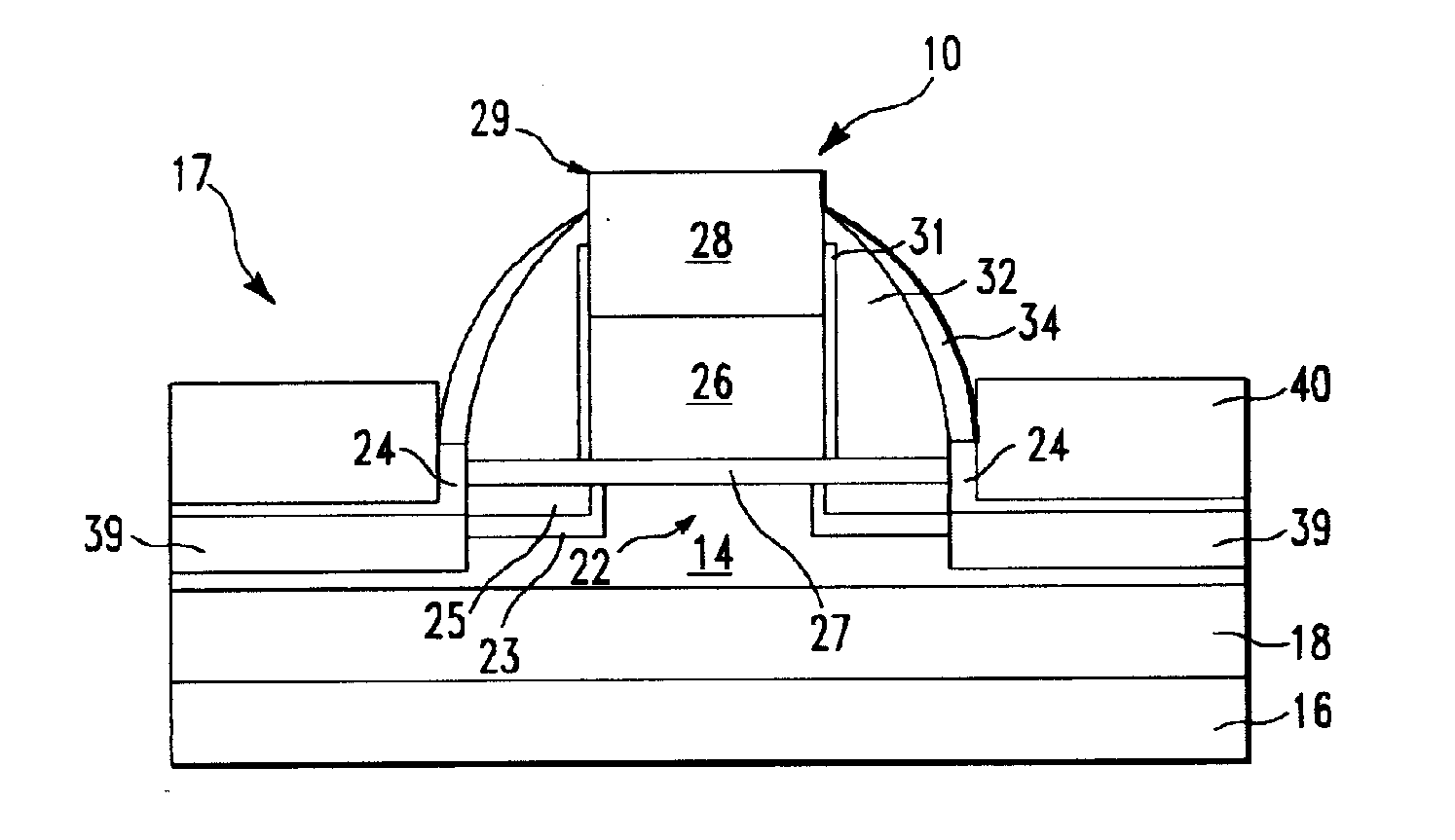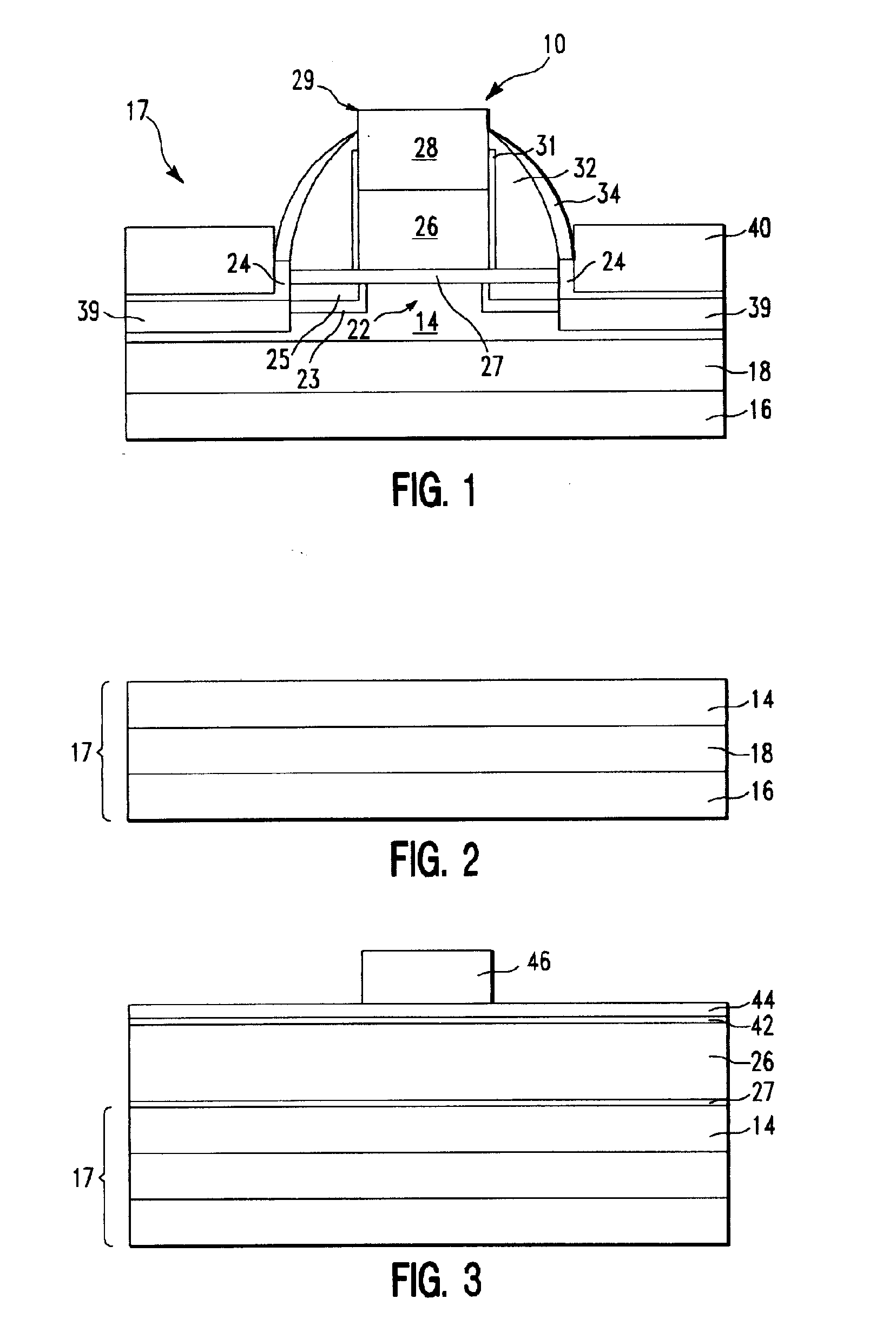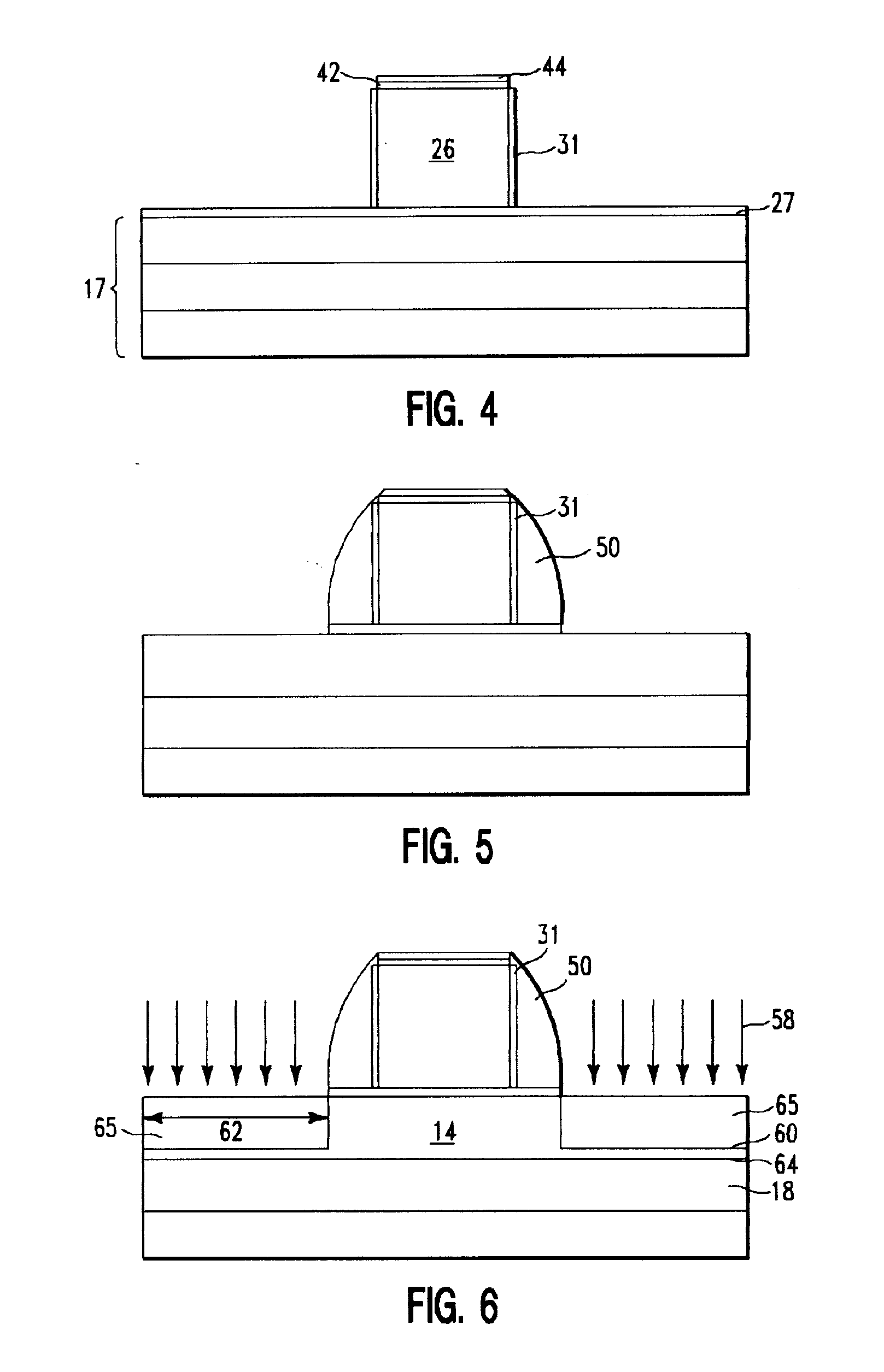Structure and method for making strained channel field effect transistor using sacrificial spacer
a technology of strained channel field and transistor, which is applied in the direction of transistors, electrical equipment, semiconductor devices, etc., can solve the problems of limiting the distance between source and drain regions, the threshold voltage of the transistor deviating from a desired value, and the inability to always be desirable for the sige region
- Summary
- Abstract
- Description
- Claims
- Application Information
AI Technical Summary
Benefits of technology
Problems solved by technology
Method used
Image
Examples
Embodiment Construction
[0012] A strained channel field effect transistor (FET) according to an embodiment of the invention is illustrated in a cross-sectional view, in FIG. 1. The FET 10 is either a PFET having a channel region 22 of p-type conductivity or the FET 10 is an NFET having n-type conductivity. The channel region 22 is disposed below a gate conductor 29 of the FET. When the FET 10 is a PFET, semiconductor alloy regions 39 are placed close to the channel region and apply a compressive longitudinal stress to the channel region 22. Preferably, the channel region 22 is disposed in a region 14 consisting essentially of silicon and the semiconductor alloy regions consist essentially of silicon germanium. Hereinafter, the semiconductor alloy regions 39 are referred to herein as silicon germanium regions 39. The spacing of the silicon germanium regions 39 to the gate conductor 29 is preferably 10 nm or less, in order for the silicon germanium regions 39 to apply a stress having a desirable magnitude to...
PUM
 Login to View More
Login to View More Abstract
Description
Claims
Application Information
 Login to View More
Login to View More - R&D
- Intellectual Property
- Life Sciences
- Materials
- Tech Scout
- Unparalleled Data Quality
- Higher Quality Content
- 60% Fewer Hallucinations
Browse by: Latest US Patents, China's latest patents, Technical Efficacy Thesaurus, Application Domain, Technology Topic, Popular Technical Reports.
© 2025 PatSnap. All rights reserved.Legal|Privacy policy|Modern Slavery Act Transparency Statement|Sitemap|About US| Contact US: help@patsnap.com



